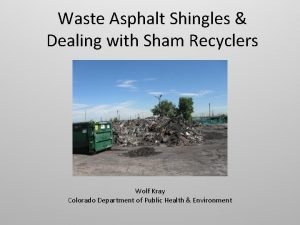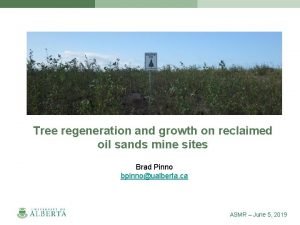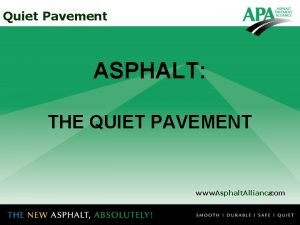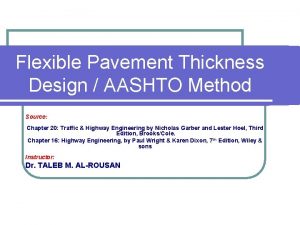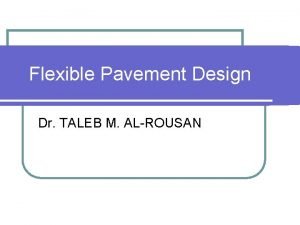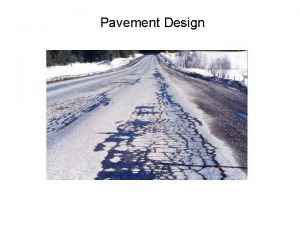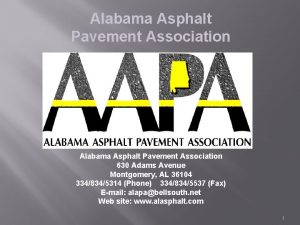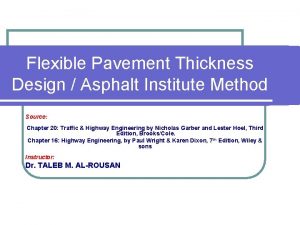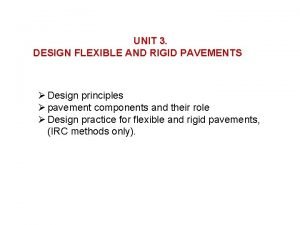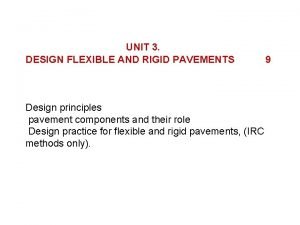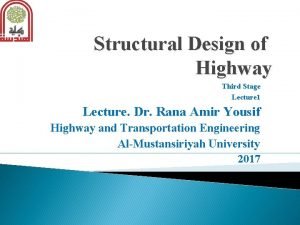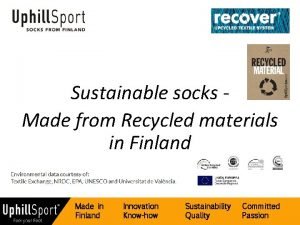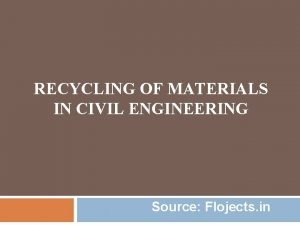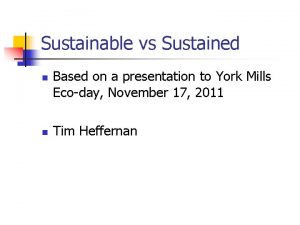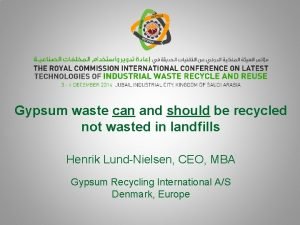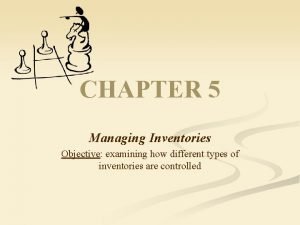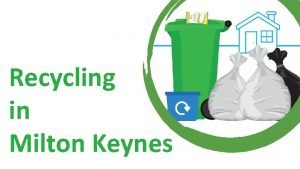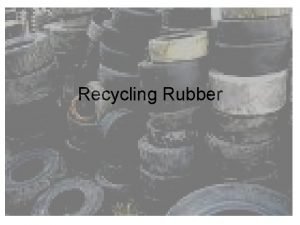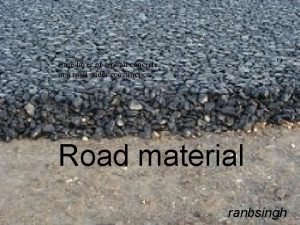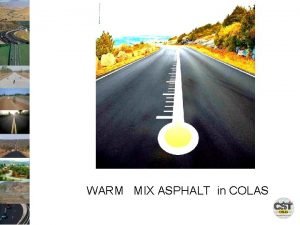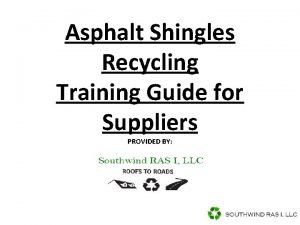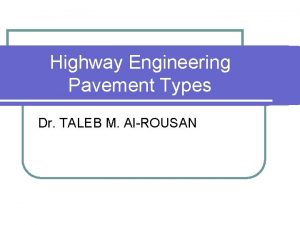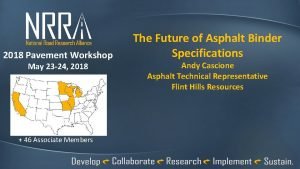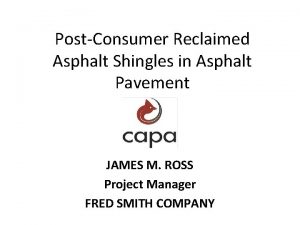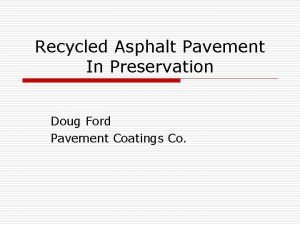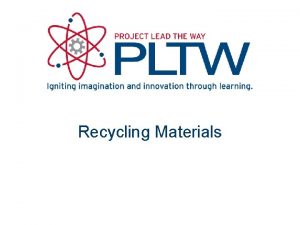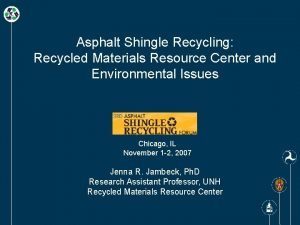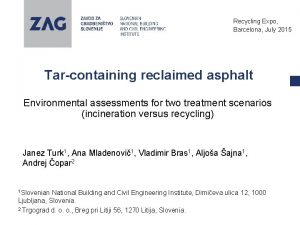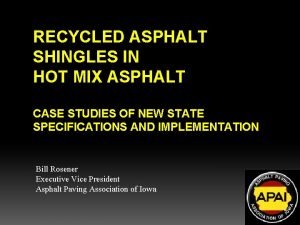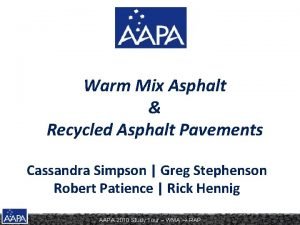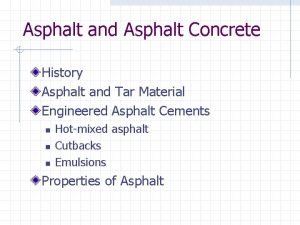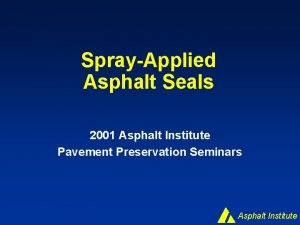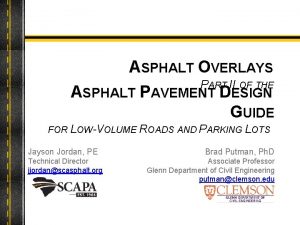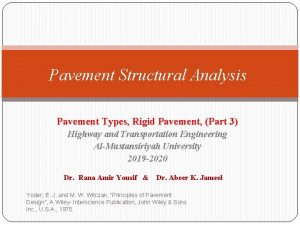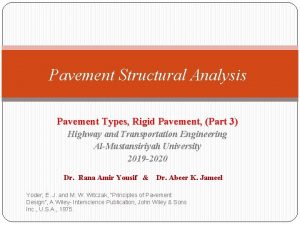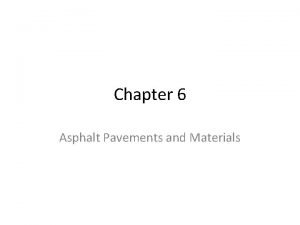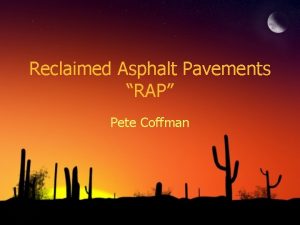Recycling of Pavement Materials Recycled Materials Reclaimed Asphalt
































- Slides: 32

Recycling of Pavement Materials

Recycled Materials Ø Reclaimed Asphalt Pavements (RAP) Ø Recycled Asphalt Shingles (RAS) Ø Recycling of concrete pavement is limited

Advantages of AC Recycling Ø Economy – >25% savings in cost of material Ø Energy saving - manufacturing & transportation Ø Environment Ø reduces amount of new materials Ø solves problem of discarding old materials Ø Eliminates problem of reconstruction of utilities, curbs & gutters associated with overlays Ø Maintains bridge & tunnel clearances

Recycling Hot Central Plant Cold In-Place (HIPR) Central Plant (CCPR) In-Place Partial Depth CIPR Full Depth FDR

Hot Central Plant Recycling

Special Considerations for Using RAP • Evaluation of quality of RAP material ØAggregate in the RAP ØBinder in the RAP ØConsistency of RAP stockpiles • Mix design ØQuantity of RAP ØAdd new aggregate and binder • Production ØRely on heat transfer from virgin aggregate to RAP ØMoisture in RAP difficult to remove • Construction ØNo special considerations 6

Construction Sequence ØPavement removal ØCrushing and stockpiling ØMixing in central plant ØLaydown and compactions

Generating RAP Stockpiling

Mix Design ØEvaluating salvaged material (RAP) • Aspahlt properties • Aggregate properties ØNeed for additional aggregate ØType and amount of recycling agent ØGrade and amount of new asphalt ØPreparation and testing of mixtures ØSelect optimum design

RAP in Plant Facility Plant type –Batch –Drum mix plant

Batch Plant Secondary Collector Batch Tower Primary Collector Storage Silos Bitumen Storage Tanks rye r D RAP Bin Cold Feed Bins 11

Batch Plant

Drum-Mix Plant Secondary Collectors Slat Conveyor Storage Silos Bitumen Storage Tanks r/M e ry r e x i D RAP Bin Cold Feed Bins 13

Drum Mix Plant

Laydown and Compaction

Recycling Hot Central Plant Cold In-Place (HIPR) Central Plant (CCPR) In-Place Partial Depth CIPR Full Depth FDR

Hot In-Place Recycling (HIPR)

HIPR Construction Sequence • Soften existing asphalt pavement with heat • Mechanically removing the pavement • Mixing with asphalt binder and/or new mixture • Replacing recycled pavement on surface

HIPR

HIPR

HIPR

Recycling Hot Central Plant Cold In-Place (HIPR) Central Plant (CCPR) In-Place Partial Depth CIPR Full Depth FDR

Cold Central Plant Recycling (CCPR)

Cold Central Plant Recycling (CCPR) §Mixing RAP with emulsion in a central plant without heating

Recycling Hot Central Plant Cold In-Place (HIPR) Central Plant (CCPR) In-Place Partial Depth CIPR Full Depth FDR

Cold In-Place Recycling (CIPR)

Partial vs. Full Depth Old HMA Surface Old Base Course Subgrade Soil

Typical Section New HMA Surface or Seal Coat Cold Recycled Base Course Old Base Course Subgrade Soil

CIPR Recycling Steps • • • Pavement sizing Addition of new aggregate Addition of new asphalt / recycling agent Mixing Laydown Aeration Compaction Curing Application of wearing surface

CIPR

Selection of Recycling as a Rehabilitation Alternative • Condition of existing pavement • Traffic level • Expected life • Cost • Time required for rehabilitation • May add rejuvenator to soften old binder or use softer new binder

Recycled Project Considerations ØUniformity ØDepth of HMA ØPresence of chip seals or asphalt rubber ØAsphalt content (bleeding) ØAggregate gradation ØAsphalt properties ØTraffic ØTypes of pavement distress
 Recycled asphalt colorado springs
Recycled asphalt colorado springs Reclaimed oil sands
Reclaimed oil sands Quiet pavement
Quiet pavement Thickness of flexible pavement
Thickness of flexible pavement Asphalt pavement design example
Asphalt pavement design example Standard axle load for pavement design
Standard axle load for pavement design Cbr method of pavement design
Cbr method of pavement design Alabama asphalt pavement association
Alabama asphalt pavement association Asphalt pavement thickness design
Asphalt pavement thickness design Flexible pavement
Flexible pavement Flexible pavement and rigid pavement
Flexible pavement and rigid pavement Compare flexible and rigid pavement
Compare flexible and rigid pavement Finland socks
Finland socks Recycled materials fashion show
Recycled materials fashion show Civil engineering source
Civil engineering source Processing
Processing Recycled
Recycled Arch of constantine frieze
Arch of constantine frieze Objectives in making christmas lantern
Objectives in making christmas lantern Recycled lantern making competition
Recycled lantern making competition Easter island chile
Easter island chile Disposal of gypsum waste
Disposal of gypsum waste Rpet filament
Rpet filament Www.themegallery.com logo
Www.themegallery.com logo Non recycled inventories in housekeeping
Non recycled inventories in housekeeping Cardboard recycling milton keynes
Cardboard recycling milton keynes Can rubber be recycled
Can rubber be recycled Asphalt base layer
Asphalt base layer Colas liquid asphalt
Colas liquid asphalt Faa p-401
Faa p-401 Shingle recycling near me
Shingle recycling near me Contained rock asphalt mat
Contained rock asphalt mat Rowe asphalt paving
Rowe asphalt paving
